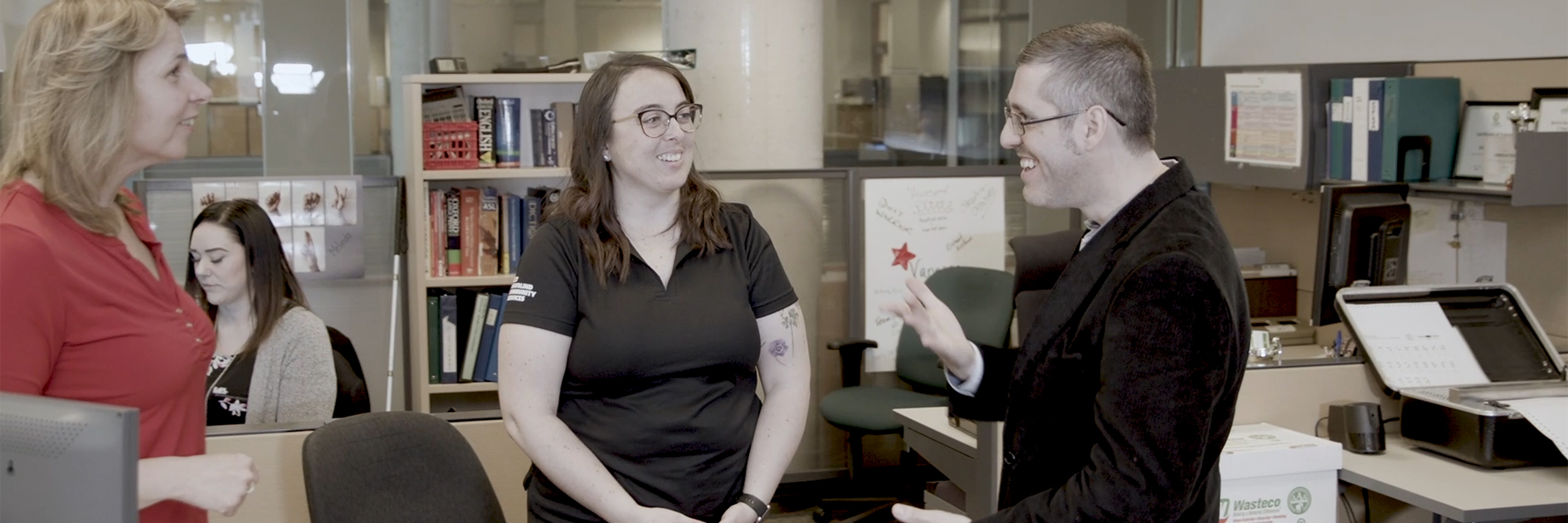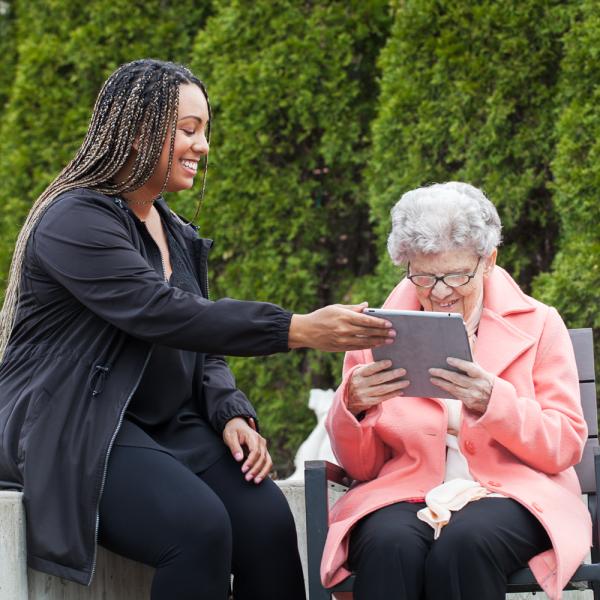
Connecting our communities through diverse means

The Deafblind community has a diverse population. Each person has varying degrees of combined vision and hearing loss, which means that each individual’s preferred communication is unique. Some people may rely on a single communication method, while others may use a combination.
- Expressive and receptive communication is the exchange of messages between at least two people.
- Receptive communication can be thought of as the “input”. It is the process of receiving and understanding a message from another person.
- Expressive communication can be thought of as the “output”. It is the process of effectively communicating a message to another person.
For some people who are Deafblind, their preferred receptive communication method may be different from their expressive communication method. It is important to find out what both their receptive and expressive communication needs are as they may differ.
Clients of CNIB Deafblind Community Services use a variety of communication methods when receiving services. These methods include:
The two-hand manual alphabet is a method of spelling out words onto a person’s hand – with each letter denoted by a particular sign or place on the hand.
In this communication method, letters are traced on the palm, so they can “read” what is being written on their hand. While this method can often be a slower form of communication, it requires minimal training and can be learned quickly.
Tactile sign language (sometimes known as hand over hand) is a method of communication that relies heavily on touch. The receiver’s hand(s) are placed lightly on the back of the signer’s hands to feel their signs through touch and movement.
Braille is a tactile writing system used by people who are blind, partially sighted or Deafblind. It can be read either on embossed paper or by using refreshable braille displays that connect to computers and smartphone devices.
In this communication method, words are spoken in a tone, speed and volume that helps facilitate clear and accessible communication for the person who is Deafblind.
ASL is a visual and gestural language used by most of the deaf community in the United States and Canada. The shape, placement, and movement of the hands, as well as facial expressions and body movements, all play important parts in conveying information.
In some cases, written communication is the simplest and clearest form of communication. Some clients may choose to receive their information using printed materials of varying sizes. Most large print notes can range in font sizes from 14-22 and beyond.
Learn your ABCs
Get ready to learn your ABCs with our ASL Fingerspelling and Two-Hand Manual Alphabet Charts. These fully accessible PDFs are a great way to start learning!